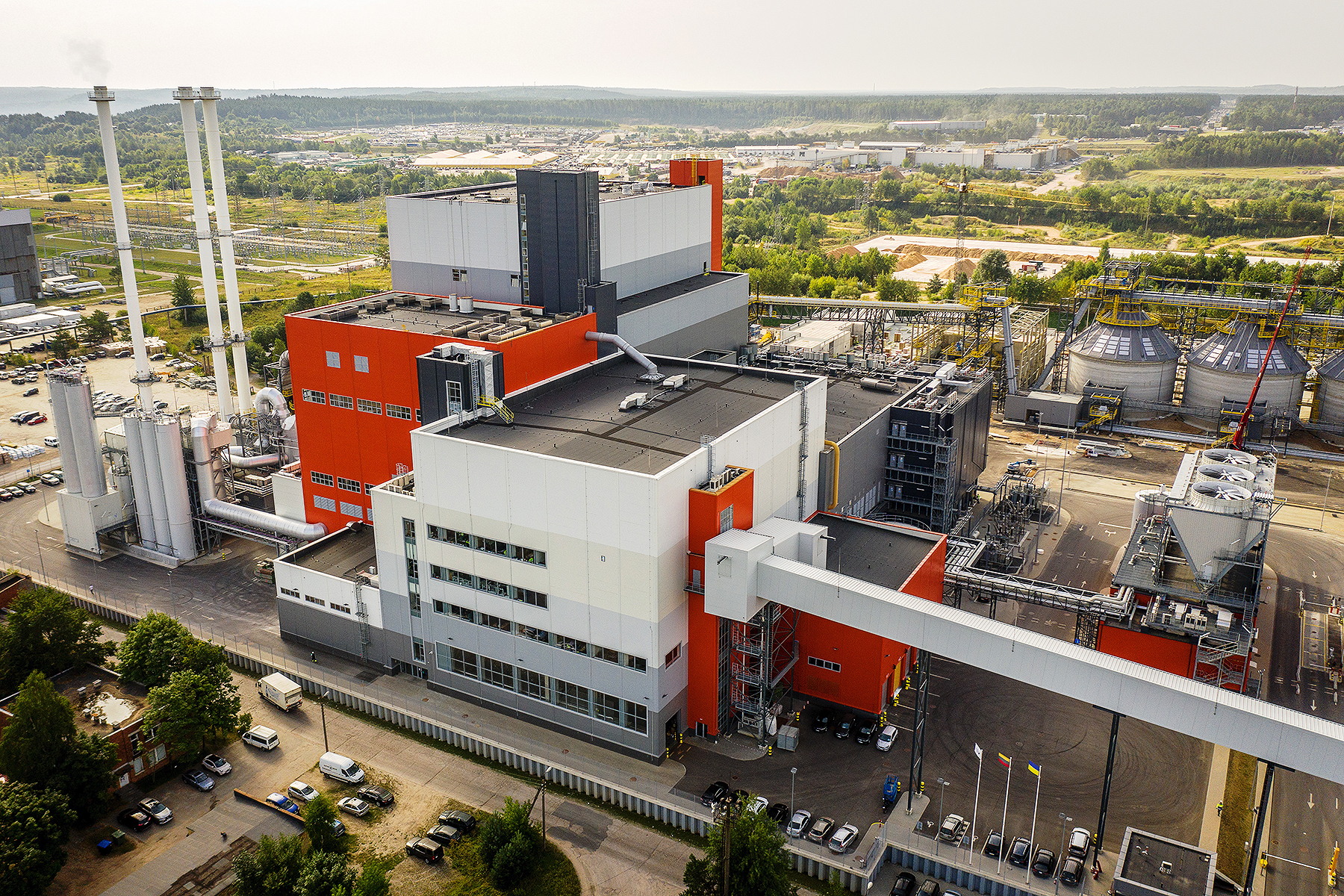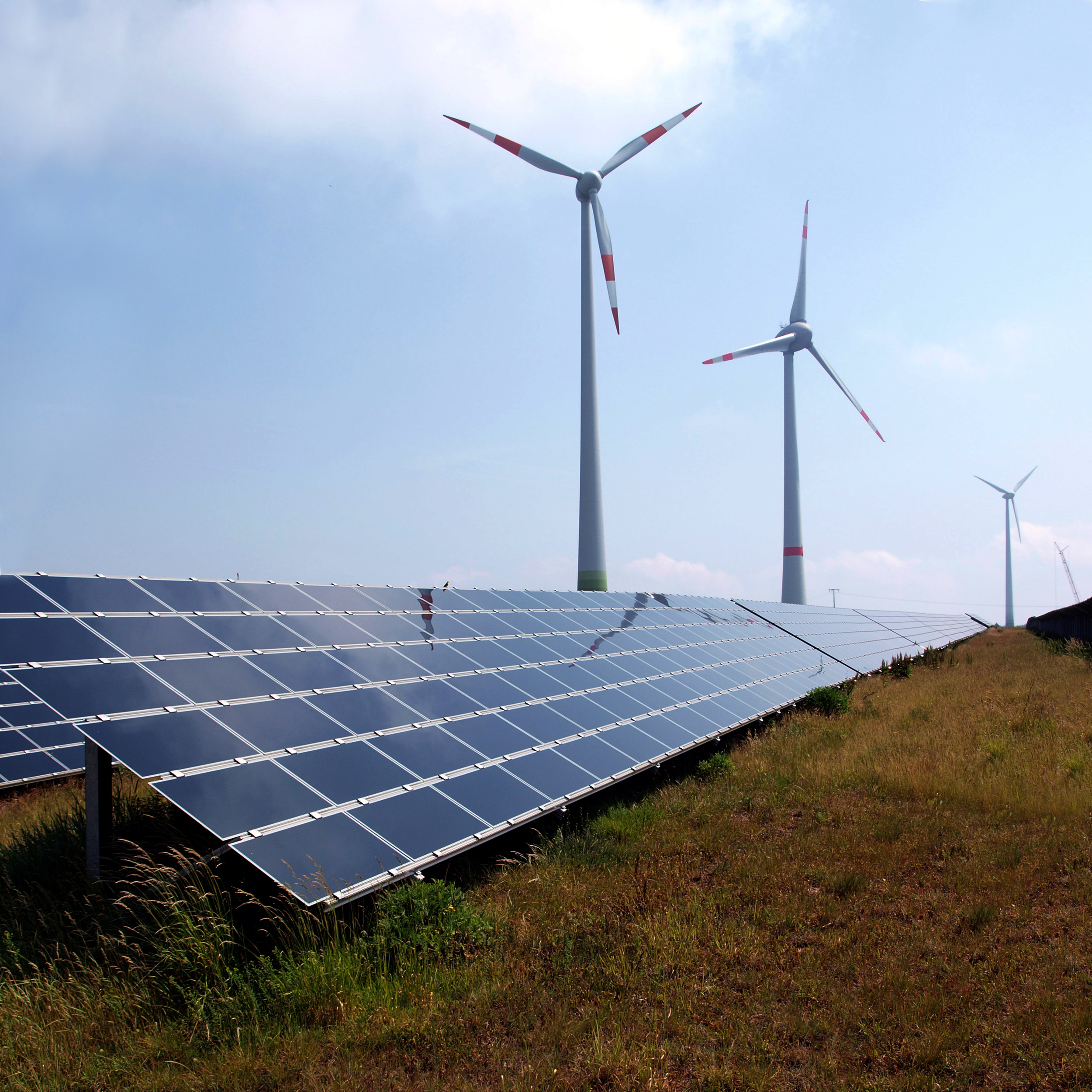|
Solar Power In Lithuania
Renewable energy in Lithuania constitutes a growing source of energy in the country. In 2023, renewable energy sources accounted for 76.4% of electricity generation in the country, up from 18.2% in 2010 and 1.4% in 1990. Statistics Renewable energy in Lithuania by type (as of 2022): Biomass Solid biofuel or biomass represents the most common source of renewable energy in Lithuania. Most commonly used are firewood and wood as well as agricultural waste. It is primarily used to produce heat, but is also used for electricity production. Biofuel Biogas Hydroelectricity * Kruonis Pumped Storage Plant, its main purpose is to provide a spinning reserve of the power system, to regulate the load curve of the power system 24 hours a day. Installed capacity of the pumped storage plant: 900 MW (4 units, 225 MW each). * Kaunas Hydroelectric Power Plant, has a capacity of 100.8 MW. Geothermal energy * Klaipėda Geothermal Demonstration Plant, the first geothermal h ... [...More Info...] [...Related Items...] OR: [Wikipedia] [Google] [Baidu] |
Kruonis Pumped Storage Plant
Kruonis Pumped Storage Plant (the KPSP) is a pumped storage hydroelectric power plant located near Kruonis, Lithuania, east of Kaunas. Its main purpose is to provide grid energy storage. It operates in conjunction with the Kaunas Hydroelectric Power Plant. During periods of low demand, usually at night, Kruonis PSHP raises water from the lower Kaunas reservoir to the upper one using cheap surplus energy. The station is designed to have an installed capacity of 1,600 MW but only four 225 MW generators are currently operational. With a fully filled upper reservoir the plant can generate 900 MW for about 12 hours. The KPSP uses hydro-resources of artificial water pools existing at different geographical levels. The electricity from this power plant is supplied to a 330 kV electricity line to Elektrėnai, where the largest fossil fuel plant in Lithuania is operating, and Kaunas. At times of surplus electricity generation, the KPSP uses the surplus electricity to pump water fro ... [...More Info...] [...Related Items...] OR: [Wikipedia] [Google] [Baidu] |
Solar Power In Lithuania
Renewable energy in Lithuania constitutes a growing source of energy in the country. In 2023, renewable energy sources accounted for 76.4% of electricity generation in the country, up from 18.2% in 2010 and 1.4% in 1990. Statistics Renewable energy in Lithuania by type (as of 2022): Biomass Solid biofuel or biomass represents the most common source of renewable energy in Lithuania. Most commonly used are firewood and wood as well as agricultural waste. It is primarily used to produce heat, but is also used for electricity production. Biofuel Biogas Hydroelectricity * Kruonis Pumped Storage Plant, its main purpose is to provide a spinning reserve of the power system, to regulate the load curve of the power system 24 hours a day. Installed capacity of the pumped storage plant: 900 MW (4 units, 225 MW each). * Kaunas Hydroelectric Power Plant, has a capacity of 100.8 MW. Geothermal energy * Klaipėda Geothermal Demonstration Plant, the first geothermal h ... [...More Info...] [...Related Items...] OR: [Wikipedia] [Google] [Baidu] |
List Of Renewable Energy Topics By Country
This is a list of renewable energy topics by country and territory. These links can be used to compare developments in renewable energy in different countries and territories and to help and encourage new writers to participate in writing about developments in their own countries or countries of interest. The list refers to renewable energy in general, as well as solar power, wind power, geothermal energy, biofuel, and hydropower. As of 2013, China, Germany, and Japan, and India, four of the world's largest economies generate more electricity from renewables than from nuclear power. Based on REN21's 2014 report, renewables supplied 19% of humans' global energy consumption. This energy consumption is divided as 9% coming from traditional biomass, 4.2% as heat energy (non-biomass), 3.8% hydro electricity and 2% is electricity from wind, solar, geothermal, and biomass. China is the world's largest producer of hydroelectricity, followed by Canada, Brazil, India, U.S and Russia. W ... [...More Info...] [...Related Items...] OR: [Wikipedia] [Google] [Baidu] |
Energy In Lithuania
Lithuania is a net energy importer. In 2019 Lithuania used around 11.4 TWh of electricity after producing just 3.6 TWh. Systematic diversification of energy imports and resources is Lithuania's key energy strategy. Long-term aims were defined in the National Energy Independence strategy in 2012 by Lietuvos Seimas. It was estimated that strategic energy independence initiatives will cost 6.3–7.8 billion in total and provide annual savings of 0.9-1.1 billion. In light of the 2022 Russian invasion of Ukraine and Russia's weaponization of energy supplies, Lithuania was among the best equipped countries in Central and Eastern Europe to deal with the energy crisis. This is because ever since the reestablishment of its independence, Lithuania has been investing in alternative energy import routes. These included the development of the Būtingė oil terminal, the electricity interconnections NordBalt and LitPol Link, the Klaipėda LNG terminal and the Gas Interconnection Pol ... [...More Info...] [...Related Items...] OR: [Wikipedia] [Google] [Baidu] |
Solar Power
Solar power, also known as solar electricity, is the conversion of energy from sunlight into electricity, either directly using photovoltaics (PV) or indirectly using concentrated solar power. Solar panels use the photovoltaic effect to convert light into an electric current. Concentrated solar power systems use lenses or mirrors and solar tracking systems to focus a large area of sunlight to a hot spot, often to drive a steam turbine. Photovoltaics (PV) were initially solely used as a source of electricity for small and medium-sized applications, from the calculator powered by a single solar cell to remote homes powered by an off-grid rooftop PV system. Commercial concentrated solar power plants were first developed in the 1980s. Since then, as the cost of solar panels has fallen, grid-connected solar PV systems' capacity and production has doubled about every three years. Three-quarters of new generation capacity is solar, with both millions of rooftop installatio ... [...More Info...] [...Related Items...] OR: [Wikipedia] [Google] [Baidu] |
Lithuania
Lithuania, officially the Republic of Lithuania, is a country in the Baltic region of Europe. It is one of three Baltic states and lies on the eastern shore of the Baltic Sea, bordered by Latvia to the north, Belarus to the east and south, Poland to the south, and the Russian exclave, semi-exclave of Kaliningrad Oblast to the southwest, with a Maritime boundary, maritime border with Sweden to the west. Lithuania covers an area of , with a population of 2.89 million. Its capital and largest city is Vilnius; other major cities include Kaunas, Klaipėda, Šiauliai and Panevėžys. Lithuanians who are the titular nation and form the majority of the country's population, belong to the ethnolinguistic group of Balts and speak Lithuanian language, Lithuanian. For millennia, the southeastern shores of the Baltic Sea were inhabited by various Balts, Baltic tribes. In the 1230s, Lithuanian lands were united for the first time by Mindaugas, who formed the Kingdom of Lithuania on 6 July ... [...More Info...] [...Related Items...] OR: [Wikipedia] [Google] [Baidu] |
The World Bank
The World Bank is an international financial institution that provides loans and grants to the governments of low- and middle-income countries for the purposes of economic development. The World Bank is the collective name for the International Bank for Reconstruction and Development (IBRD) and International Development Association (IDA), two of five international organizations owned by the World Bank Group. It was established along with the International Monetary Fund at the 1944 Bretton Woods Conference. After a slow start, its first loan was to France in 1947. In its early years, it primarily focused on rebuilding Europe. Over time, it focused on providing loans to developing world countries. In the 1970s, the World Bank re-conceptualized its mission of facilitating development as being oriented around poverty reduction. For the last 30 years, it has included NGOs and environmental groups in its loan portfolio. Its loan strategy is influenced by environmental and social sa ... [...More Info...] [...Related Items...] OR: [Wikipedia] [Google] [Baidu] |
Baltic Sea
The Baltic Sea is an arm of the Atlantic Ocean that is enclosed by the countries of Denmark, Estonia, Finland, Germany, Latvia, Lithuania, Poland, Russia, Sweden, and the North European Plain, North and Central European Plain regions. It is the world's largest brackish water basin. The sea stretches from 53°N to 66°N latitude and from 10°E to 30°E longitude. It is a Continental shelf#Shelf seas, shelf sea and marginal sea of the Atlantic with limited water exchange between the two, making it an inland sea. The Baltic Sea drains through the Danish straits into the Kattegat by way of the Øresund, Great Belt and Little Belt. It includes the Gulf of Bothnia (divided into the Bothnian Bay and the Bothnian Sea), the Gulf of Finland, the Gulf of Riga and the Bay of Gdańsk. The "Baltic Proper" is bordered on its northern edge, at latitude 60°N, by Åland and the Gulf of Bothnia, on its northeastern edge by the Gulf of Finland, on its eastern edge by the Gulf of Riga, and in the ... [...More Info...] [...Related Items...] OR: [Wikipedia] [Google] [Baidu] |
Klaipėda Geothermal Demonstration Plant
The Klaipėda Geothermal Demonstration Plant is a geothermal heating plant in Klaipėda, Lithuania, constructed during the late 1990s and early 2000s. It was the first geothermal heating plant in the Baltic Sea region. Its purpose was to reduce carbon dioxide, sulfur dioxide, nitrogen oxide, and particulate emissions in the area, as well as to reduce Lithuania's dependence on foreign energy sources. The plant supplies district heating to the city. Construction was financed by a loan from the World Bank (US$5.9 million) and a grant from the Global Environment Facility (US$6.9 million). The Danish state company Dansk Olie og Naturgas (now Ørsted) provided technical support, and Enterprise Geoterma served as the implementing agency. The total cost of the plant was US$19.5 million. Since 2017 it has been closed due to financial and technical issues and the operating company Geoterma filled for bankruptcy and was liquidated in 2019. Background After declaring independe ... [...More Info...] [...Related Items...] OR: [Wikipedia] [Google] [Baidu] |




